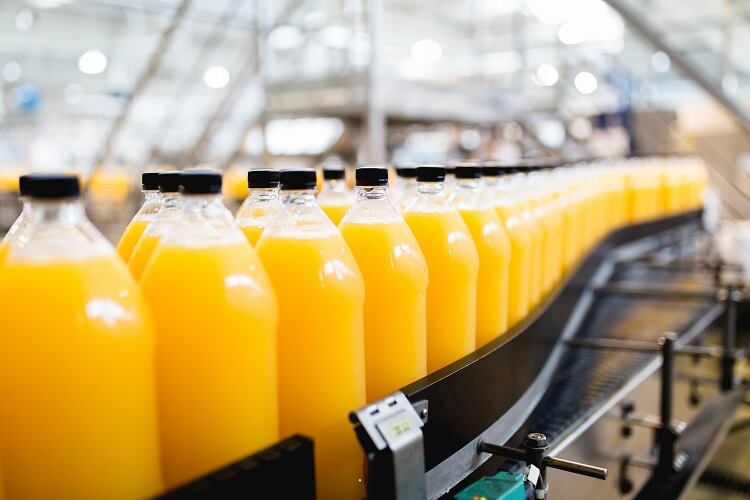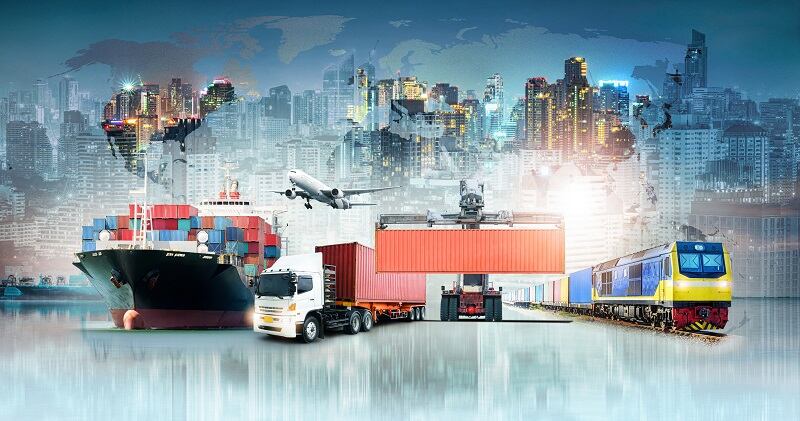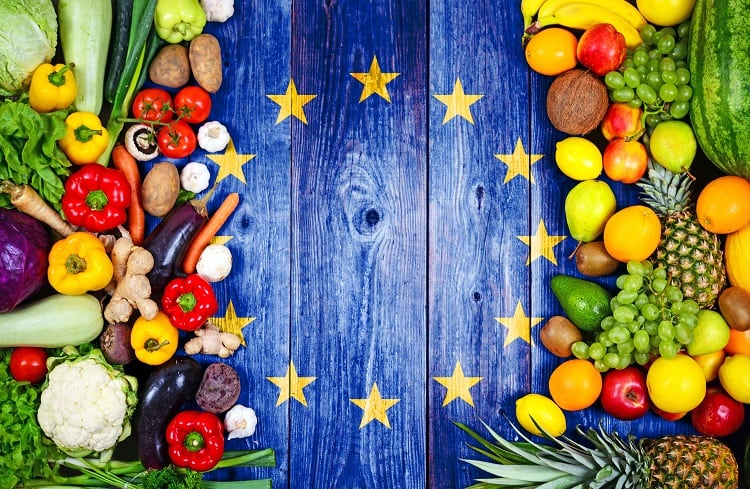Worldwide, the food and beverage sector is responsible for 690 megatons of greenhouse gas (GHG) emissions every year, equating to roughly one-third of global emissions, according to the FAO.
Within the European Union, the sector contributes approximately 30% of total emissions. To put this into context, in Europe an individual contributes around 2 tons of GHG emissions per year.
“It’s an enormous contribution,” said Rebecca Turner, GHG Reporting Knowledge Leader at energy and environmental consultancy Ricardo.
To help achieve the EU’s ambition of achieving net-zero emissions by 2050, the food and beverage industry must act rapidly. An interim target of 55% reduction in emissions by 2030 is also in place.
“It is a really challenging goal,” she told delegates at a FoodDrinkEurope (FDE) event this morning. “There isn’t time for inaction.”
Manufacturing state of play
Together with co-author Afredo Lopez Carretero, Associate Director Environmental Policy at Ricardo, Turner has penned a roadmap to help food and drink makers decarbonise their manufacturing processes.
Within F&B, manufacturing alone accounts for 11% of the European sector’s total emissions, according to Ricardo's report. In a global context, Europe emits slightly less than the US (16%), yet significantly more than China (3%) and India (1%). The difference here is the level of processing within the food chain, with China and India consuming fewer processed, and more raw, foods in comparison.

The big focus on reducing carbon emissions from the manufacturing sector lies in energy use for both heating and cooling. “Energy intensiveness of the sector is increasing,” explained Turner, adding that around one-third of total F&B emissions come directly from energy use.
So which elements of processing require the most energy? Processing itself uses just 6%, compressed air and pumps use 9% respectively, lighting and ventilation account for 10% each, with 25% associated with other motors.
A significant 31% of the electricity used in the sector comes from cooling systems. “This is quite unique to food and drink,” commented Turner, “and different to other manufacturing sectors. This is a specific [element] this sector will need to address”.
Concerning geographical sources of emissions, unsurprisingly the majority of manufacturing sites are concentrated in just five countries: France, the UK, Germany, Spain, and Italy.
What can companies do to decarbonise?
While a one-size-fits-all approach is not always realistic – the Ricardo study concerns both small and large companies – co-author Carretero stressed that most companies will need to set up the same formula: baseline, plan, tool.
The majority of companies will need to set up a baseline to establish the state of their emissions today, in 2021, he told delegates. They will then need to draft a plan to determine how they will decarbonise their manufacturing processes, and select a tool to help them choose decarbonisation measures.
“All companies, whether small or large, will need to do all these activities,” he continued, citing the adoption of cleaner fuels, renewables, and electrification “to achieve net-zero emissions by 2050”.
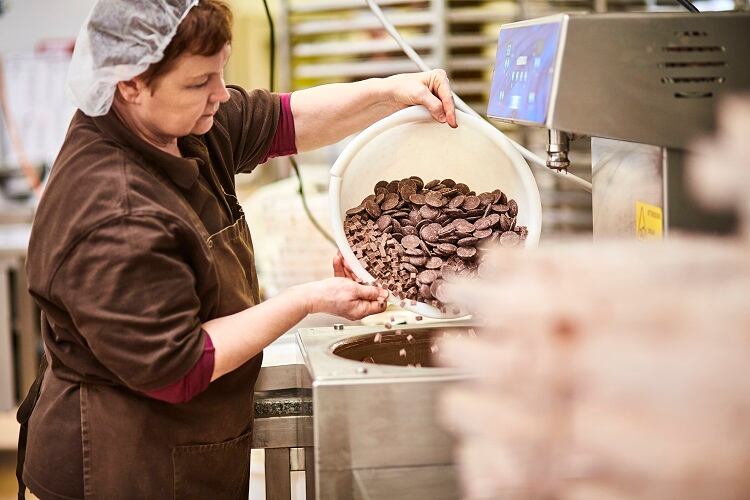
In terms of a timeline, companies with high energy consumption have no time to waste. Others will small or reduced energy intensity have ‘a little more room’ to establish a plan. “But none of them should postpone their analysis,” he stressed.
Some of the most common tools to help decarbonise manufacturing processes include switching to renewables for heat supply, and powering with on-site technology such as solar power. An orange juice company could invest in a more energy-efficient pasteuriser, for example, and use cleaner fuel or renewables to power machinery.
“There is no silver bullet,” said Carretero. To begin with, he expects food and drink players to implement the ‘low hanging fruit’ options – essentially those that are more affordable. But as ‘it is a very long journey to 2050’, the associate director expects new technologies to reach the market over the next 40 years.
“Companies will need to keep an eye on how these novel and promising techniques evolve and hopefully become more affordable…”
Barriers to success
Technology availability and cost represent a significant challenge to decarbonisation efforts.
Green hydrogen, for example, represents ‘the only real solution’ to decarbonising high temperature heat, explained Carretero. Technically, green hydrogen has been proven in turbines and in boilers – as is used by oil and gas refineries.
However, it’s not cheap, and this presents a significant barrier. So too does the availability of such technologies. “The majority of [F&B manufacturing] plants are spread in small villages or across the country. They will not have access to [specific] infrastructure or access to green hydrogen, if this is a reality in the future,” we were told.
Retrofitting existing sites presents two key hurdles: it can take three to five years to revamp a pre-existing factory, and the cost can prove prohibitive – particularly for smaller companies. Aside from lacking capital, ‘many small companies will not have access to know-how’, Carretero continued.
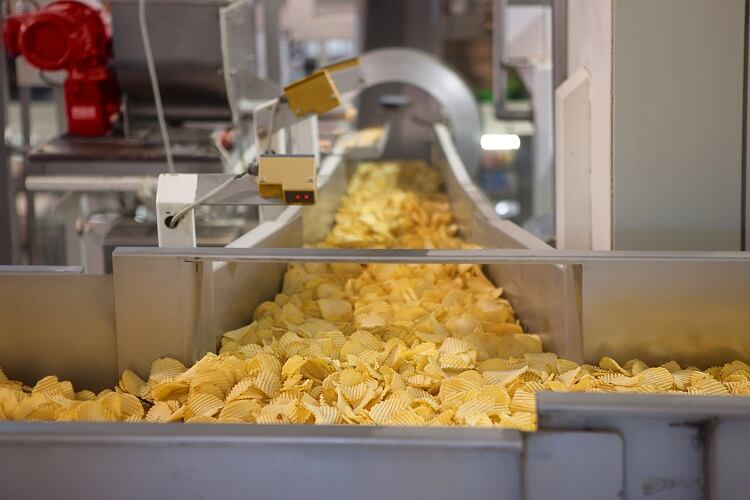
And finally, current regulations and industrial policies are ‘unstable’. “The European Union is currently revising many industrial policies related to the Green Deal Challenge,” he explained. The associate director expects the regulatory landscape to ‘be more stable’ after the summer, which will ease decision-making for industry players wanting to decarbonise.
And opportunities…
It’s not all hurdles and barriers, however. The Ricardo roadmap notes decarbonising manufacturing also presents significant opportunities for the sector.
To start with, as the majority of GHG emissions come from energy generation in F&B manufacturing, reducing energy usage should also reduce operating costs.
Concerning decarbonisation technology costs, it is expected that as production scales, price tags will lower. “When looking back at renewable solution technologies, like wind energy or concentrated solar heat, the cost has reduced,” said Carretero. “They are becoming more affordable, and today they can compete with fossil fuel, which is good news.”
Part of decarbonisation costs can also be passed onto the consumer, suggested the co-author. “Customers who buy food and drink…appreciate green products and are willing to pay a little bit more if a biscuit or drink is proven to be green. So some companies will be able to transfer part of the decarbonisation cost to the consumer.”
Another good news for the bottom line relates to European investment in decarbonization. “EU funding is available now for this sector,” explained Turner. “That’s available for energy efficiency measures, the reskilling of staff, renewable energy, heat recovery, carbon capture and storage. It’s available to industry now to make those changes, as well as a lot of funding going into research and innovation…and that’s really important.”
‘Decarbonisation roadmap for the European food and drink manufacturing sector’ – commissioned by FDE and conducted by Ricardo – will be published in the coming days.

